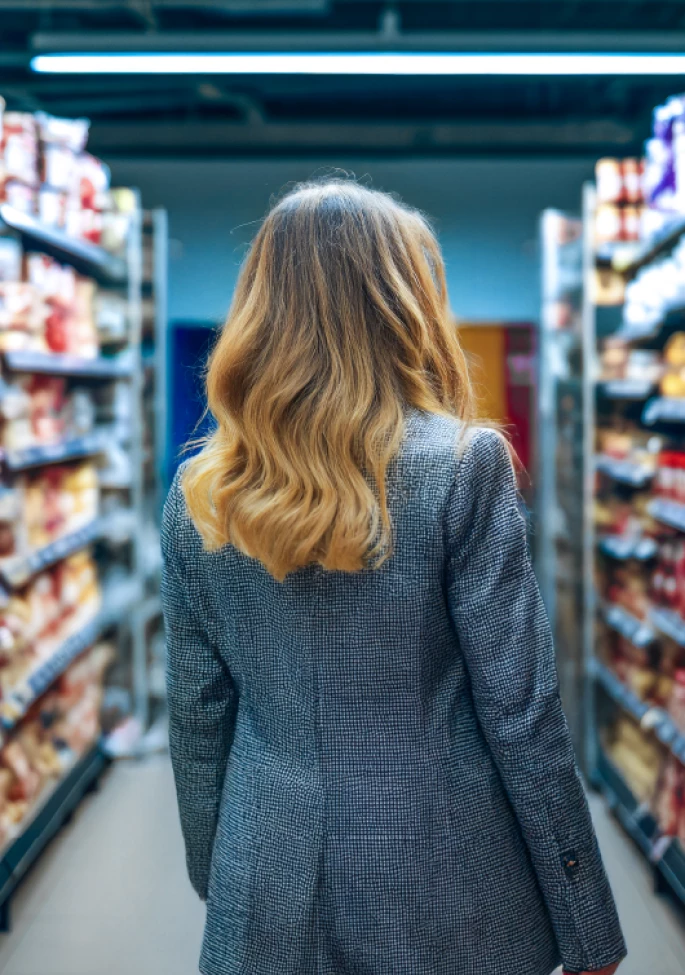With the alcoholic beverage business valued at $1.76 billion in 2024 and expected to reach $3.02 billion by 2030, the race to attract and retain customers is fiercely competitive. When advertising alcoholic beverages, brands may use a sensory claim—that is, a claim about the taste, smell, feel, or other sensory experience created by the alcohol. This kind of sensory advertising claim can be substantiated with a sensory evaluation, but measuring consumer preferences for alcohol means more risk, as well as adherence to specific legal and industry standards.
This article outlines some of the ways in which claim substantiation for alcohol differs from other sensory claims substantiation. These include considerations related to central location testing—the most common setting for an alcohol sensory evaluation— regulations, respondent safety, quality control, and product sourcing and delivery.
What Are Sensory Claims?
Sensory claims are advertising claims relating to the physical senses, such as the taste of a food or beverage, the feel of a hand lotion, or the scent of a fragrance. Advertisers may use sensory claims such as “perfectly seasoned,” “eliminates tough odors,” and “gives you touchable soft hair” to market existing products or new product lines.
Sensory claims are about consumer perceptions. Unlike objective product attributes that can be measured in a clinical setting using scientific instruments, or sales data based on marketplace information, sensory claims can be tested only by having consumers taste, use, or experience a product, then measuring their perceptions, experiences, and preferences.
In order to generate reliable evidence about what consumers think, feel, and experience about a product, advertisers must perform sensory research, such as consumer surveys or trained sensory panel evaluations.
Raising the Bar for Sensory Evaluations
So, how does that sensory evaluation work? It is more formal than the typical setting for drinks with friends—a dusty bar with peanuts on the floor, a romantic wine tasting tour—although sensory evaluation does require researchers to replicate marketplace conditions in certain ways. Like all surveys that advertisers rely on before regulators and courts, taste tests must adhere to certain standards. With alcohol in particular, those standards expand to include considerations related to respondents’ ages and safety. Without proper standards of safety and screening, consistent product sourcing and delivery, and serving controls and conditions, your wine claim survey could be worth about as much as sour grapes.
Central Location Tests for Reliable Alcohol Sensory Claims
Although a vineyard tasting room is not the right place for a properly conducted alcohol sensory evaluation, such surveys frequently occur in a centralized setting. Alcohol sensory evaluations are typically conducted as central location tests (CLTs), in which participants come to a central facility to do the tasting. This article describes alcohol claims research that is conducted as a CLT.
Unfortunately for those who became used to drinking wine at home during the 2020 shutdown, home use tests (HUTs) are unusual for alcohol claims testing because they increase the risk of problems with the research, the respondents, and the law. Without monitoring the test in person, researchers cannot be sure that the tester is of legal age, with no underlying health conditions that would prevent them from consuming alcohol. They also cannot ensure the tester’s safety, including preventing them from driving under the influence.
A central facility is under the researchers’ control, so they can ensure that it meets all relevant ASTM International (formerly the American Society for Testing and Materials) standards, complies with state and local laws, and meets the conditions necessary to create reliable results from the research.
Alcohol Sensory Claims Survey Standards
Some standards that apply to alcohol claim testing would apply to any survey intended to support an advertising claim. For example, while respondents may not be drinking wine at a vineyard on a date in a blindfold, they should still be “blinded”—that is, they should not know which product they are tasting at any given time. To further ensure that the survey is double-blinded, eliminating another potential source of bias, only those staff members who do not work directly with respondents should know what specific products are being tested.
For the same reason, the product being tested should be delivered upright in unmarked boxes and taken to a restricted pouring area as soon as it arrives at the central location test site. If researchers buy the products locally, staff members should take them directly to the facility after purchase.
In addition, researchers should do their best to ensure that the product is served in a way that mimics how real buyers would typically consume it. This does not mean that wine should be served over a romantic dinner, but rather that researchers should make sure the wine is as similar as possible to the same brand of wine that is available for sale in the area. For example, researchers should purchase the product locally whenever they can, to ensure that the product being tested is comparable to what respondents could buy in terms of freshness and local availability. If researchers are conducting the same taste test in different cities, they should try to purchase the products at the same retail chain for each city, or the same type of retail chain (such as grocery stores or liquor stores). If one product in the study has not yet been released and researchers cannot buy it at a store, they should do their best to make sure the competing product is of equivalent age and freshness. Finally, as with all claim substantiation surveys, respondents must be qualified as drinkers of the type of alcohol being evaluated.
How Does Regulatory Compliance Work in Sensory Claims Research?
Another aspect of alcohol sensory evaluations is the need to comply with the many laws and rules that govern how the tasting should be conducted. ASTM International sets industry standards that are widely accepted by United States courts and regulators.
ASTM offers standards for alcohol sensory claim testing that include compliance with state laws (federal or local laws may also apply in some cases) about the consumption and service of alcohol. These include:
- Researchers must comply with state laws on shipping alcohol across state lines.
- If required in the area where the test takes place, the facility hosting the test must be licensed or bonded.i
- If required in the area where the test takes place, the alcohol must be served by a certified bartender.ii
- Participants should not be served enough alcohol to put them over the legal limit for driving under the influence of alcohol.iii
- Respondents must be of legal age to drink in the state where the test is being conducted.iv
Respondent Safety and Screening
After the end of a long day of wine tasting, respondents might pile into a train that carries them home without worrying about a designated driver—but only in wine country. A properly conducted sensory evaluation requires researchers to think about respondent safety, including safety on the road.
ASTM calls for researchers to require participants to complete informed consent forms,v and requires that researchers ensure that respondents who are drinking do not drive. If respondents do not have a designated driver, the researchers should provide free transportation or vouchers for professional transportation. Each driver carrying respondents must have a valid license that is checked at the facility, and both the drivers and the respondents must be under the legal blood-alcohol concentration limit (0.08 in most US states) to drive, which the researchers can test with a breathalyzer.vi The survey’s design must include staff qualified to conduct sobriety tests and check licenses at the facility.vii ASTM recommends further safeguards against respondent fatigue and too swift an increase in blood alcohol levels, through palate cleansing and limiting the number of samples.viii
Beyond driving, researchers should check that respondents are medically fit to drink, which means they must not be taking any medications that can interact with alcohol,ix and they must not have any food allergies or sensitivities of any kind.x Respondents should not be allowed to participate if they have previously consumed alcohol on the day of the test,xi or if they habitually drink to excess, defined as daily consumption of more than two 1-ounce drinks of high-proof spirits, one bottle of wine, one 6-pack of beer, or one 4-pack of wine coolers/breezers.xii
Serving Conditions and Controls in Alcohol Claim Testing
Wineries may offer attractive tasting rooms and snacks that go well with wine, but that is nothing compared to the serving requirements of a wine sensory evaluation. ASTM requires researchers to standardize serving conditions to ensure the data is not biased by inconsistent respondent experiences. These standards tell researchers to serve alcohol at whatever serving temperature is typical for the type of alcohol, and they provide specific temperatures for sensory evaluations involving beverages at different temperatures.
For beverages served cold, such as beer, ASTM recommends a serving temperature between 3°C (37.5°F) and 7°C (44.6°F) and using an ice bath to maintain the temperature.xiii Similarly, a room-temperature beverage like wine should be 21-24°C (69.8-75.2°F), and hot beverages should be 66-71°C (150.8-159.8°F). Glass should be used whenever possible, or plastic may be used after researchers have ensured that it does not affect the taste of the beverage.xiv
The Importance of Reliable Alcohol Claim Substantiation Surveys
Whether you are preparing for a battle of burgundies or a clash of cabernets, you must meet the applicable standards in order to conduct an alcohol sensory claims substantiation survey that withstands scrutiny. IMS Legal Strategies offers survey expertise and other research to substantiate advertising claims, including sensory claims. Our specialized litigation surveys and consumer science team has conducted many claims surveys involving food and beverages, including tests in the highly regulated world of alcoholic beverages. Brands engage us to measure consumer preferences, claims about flavor and taste, and other sensory advertising claims. We deliver reports that help guide marketing and advertising claims for use in litigation.
The results of our survey experts’ research provide valuable information for brands looking to make the best possible impact with their advertising budgets. Although the results are sometimes unexpected, they can still provide useful information for a claim.
For example, when we measured one alcoholic beverage against a competitor, the findings did not support the claim that the brand was hoping to make. However, our client was able to pivot to another claim that our research did support, and those insights guided our client’s product launch successfully. Although this claim was not what the brand originally intended, our research ultimately helped the brand make its advertising and marketing expenditures wisely, focusing on the specific areas where it had a greater likelihood of success.







